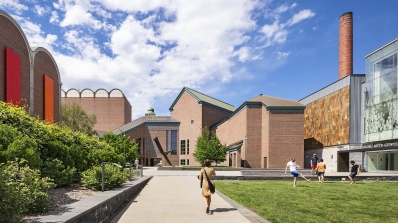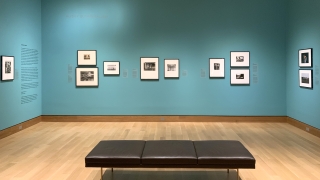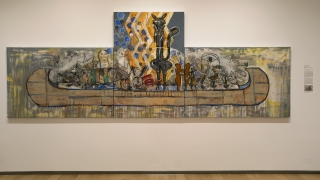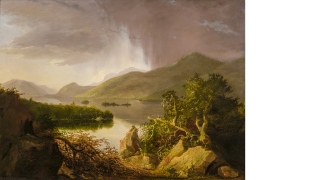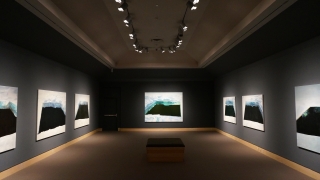Exhibitions Archive
Abstracting Nature
Transcendent LandscapesTranscendent Landscapes: Abstracting Nature explores the environment as a subject in abstract art. Focusing on five monumental works by female painters, this exhibition studies the spiritual role landscapes play in painting and considers the way these works evoke metaphysical experiences for both the artist and the viewer.
A Space for Dialogue is a student-curated exhibition program that began in 2001. Hood Museum of Art interns create an installation drawn from the museum’s permanent collection by engaging with every aspect of curation, from doing research and selecting objects, to choosing frames and a wall color, to planning a layout and writing labels and a brochure, to giving a public talk. There have been over 100 A Space for Dialogue exhibitions on a wide variety of themes.
The melodrama of Southern Gothic literature has captivated many with its enthralling treatment of the grotesque. The exhibition Southern Gothic explores the complex and often macabre world of the Southeastern United States. This niche genre deals with racial tensions, Reconstruction, the Great Depression, and the ghostly remains of the Antebellum era. This exhibition explores works from artists who have captured the spirit of Southern Gothic in all its darkness—and light.
A Space for Dialogue is a student-curated exhibition program that began in 2001. Hood Museum of Art interns create an installation drawn from the museum’s permanent collection by engaging with every aspect of curation, from doing research and selecting objects, to choosing frames and a wall color, to planning a layout and writing labels and a brochure, to giving a public talk. There have been over 100 A Space for Dialogue exhibitions on a wide variety of themes.
The Jane and Raphael Bernstein Collection
A Legacy for LearningA Legacy for Learning: The Jane and Raphael Bernstein Collection comprises a series of exhibitions that individually and collectively celebrate the Bernstein family's gifts to the collection of the Hood Museum of Art over four decades. These shows present photography, paintings, prints, drawings, and sculpture by European, Japanese, and North American artists.
In spring and summer 2021, the museum features the Bernstein Collection installations Pinpricks and Pomposity: The Inventiveness of English Visual Satire, Landscape(d): Modern Photography and the Environment, and Lyrical Journey: Toko Shinoda.
In August 2021, the installations change over to Inuit Art | Inuit Qaujimajatuqangit, Both Sides of the Lens: Portrait Photography, and Mystic Peak: Selections from the Bernstein Collection of Japanese Art, through January 2022.
Trade Canoe: Forty Days and Forty Nights
Jaune Quick-to-See SmithTrade Canoe: Forty Days and Forty Nights is part of Jaune Quick-to-See Smith’s well-known Trade Canoe series, which she began in 1992 as a critical response to quincentennial celebrations of Columbus’s arrival to the "New World." In her Trade Canoes and other large-scale paintings, Smith often layers images, paint, text, and objects to convey entangled webs of history, colonization, and extraction that characterize the American experience. Within Forty Days and Forty Nights, Smith draws on imagery from the Christian Bible, Salish creation stories and homelands, art historical references, and pop culture. She creates a cacophonous visual narrative, signaling a possible future of mass flooding as a result of global climate change and rising sea levels. Through this painting and The Rancher, also on view in the exhibition, Smith invites audiences to engage in a complex dialogue and to reconsider the visual landscapes that shape our understandings of Native Americans.
